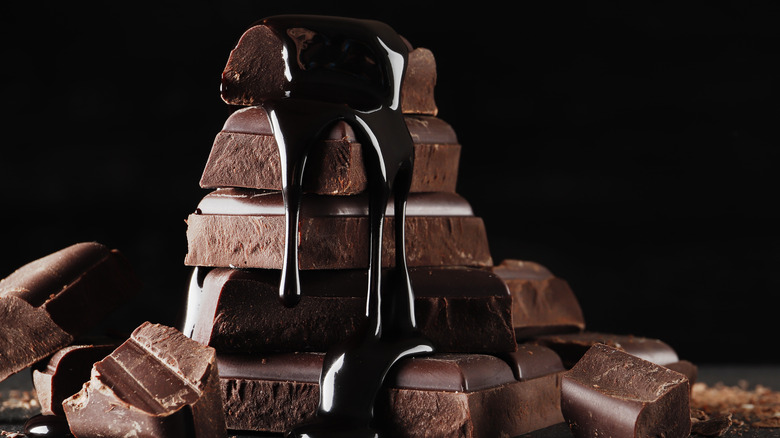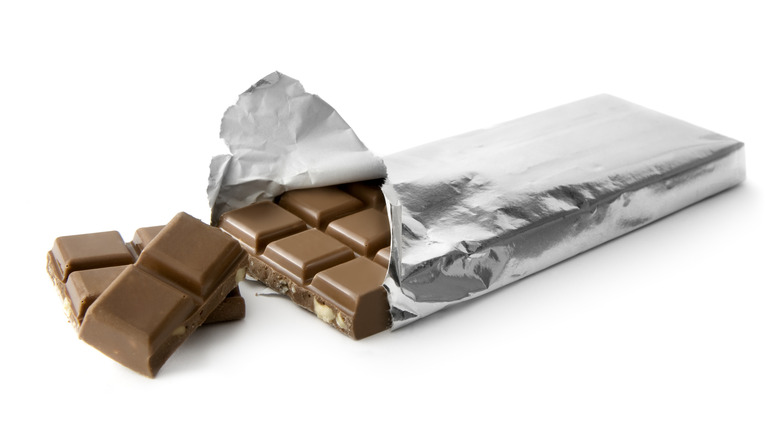How To Keep Chocolate From Melting Without A Fridge In Sight
Whether you prefer pure milk, dark, or white chocolate, or chocolate bars loaded with peanut butter, caramel, and the like, no one wants their favorite chocolate treat to melt into a mess. Unless you're whipping up a molten chocolate soufflé or savoring a mouthful of campfire s'mores, you'd probably prefer not to enjoy your chocolate bar in half-melted form. Fortunately, there are a variety of ways to keep your favorite sweets from going runny, even without taking up fridge space. Proper storage in a cool, dark place and wrapping chocolate in foil are a good start.
Although cocoa butter – an edible fat that comes from cacao beans – is one reason your chocolates taste so good and its texture is so creamy, it's also the culprit for why it melts easily. Chocolate tends to start melting between 86 to 90 degrees Fahrenheit, but this greatly depends on the type of chocolate. Dark chocolate — which contains more cocoa solids as opposed to meltable fats — has the highest melting point, at around 115 degrees Fahrenheit. White chocolate, on the other hand, is void of cocoa solids and contains large amounts of sugar and milkfat, causing it to melt at lower temperatures.
No matter what kind of chocolate you keep in the house, proper storage is essential, and it doesn't have to be in your refrigerator. In fact, the fridge can do more harm than good.
The best way to store chocolate so it doesn't melt
When it comes to properly storing your chocolates, the sweet spot is to keep them at temperatures between 65 and 68 degrees Fahrenheit. Unless you plan on cranking up the air conditioning, one of the best ways to protect your treats is to opt for a cooler, dark environment. Try storing them on the pantry shelf or in your kitchen cupboard. Another option is to wrap them in foil to help insulate them against heat.
If your home is usually quite warm, you may be tempted to just toss your chocolates in the fridge, but not so fast. As it turns out, the refrigerator is one of the worst places you can store your chocolates. Refrigerating your chocolates can impact their taste and texture, as these sweets can easily absorb odors from other foods stored in the fridge, such as meats and cheeses. Cocoa butter and solids don't stay very stable at chilly temperatures, so the texture may also be affected, and your chocolate might even bloom. Blooming is when sugar accumulates on the outside of chocolate due to fluctuations in temperature or humidity, which creates an unattractive white cast and alters the taste and texture of the bar. For the best-tasting chocolate, your best bet is to ditch the fridge and keep it in the coolest (but not coldest) place in your home.


